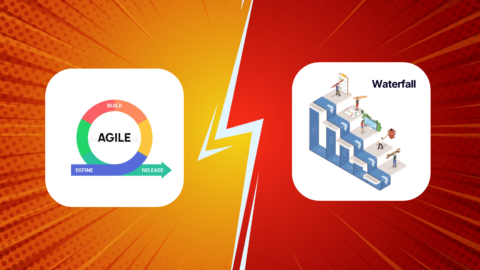Databricks and Snowflake are two of the most popular cloud-based data analytics platforms that provide organizations with powerful tools to store, process and analyze large amounts of data. Both platforms offer a range of features that help organizations to make informed decisions by leveraging their data assets. While Databricks is an open-source platform focusing on big data processing and machine learning, Snowflake is a cloud-based data warehousing platform that provides a secure and scalable solution for data storage and analysis.
In this comparison of Databricks Vs Snowflake, we’ll take a closer look at the key differences and similarities between the two platforms, including their features, architecture, and pricing, to help you determine which solution is best suited for your organization’s needs.
Databricks
Databricks is a cloud-based platform for data engineering, machine learning, and analytics. It provides a collaborative environment for data scientists, data engineers, and business analysts to work together to process, clean, and transform data into meaningful insights.
Snowflake
Snowflake is a cloud-based data warehousing platform that provides a fully managed solution for storing, processing, and analyzing large amounts of structured and semi-structured data. It provides a SQL-based interface for querying data and supports a variety of data sources and uses cases, including data warehousing, data lake, and real-time analytics.
Similarities between Databricks and Snowflake
There are several similarities between Databricks and Snowflake:
Cloud-based: Both platforms are cloud-based, which means they can be accessed from anywhere with an internet connection, reducing the need for on-premise infrastructure and hardware.
Scalability: Both platforms offer scalable solutions that can accommodate growth as an organization’s data requirements expand.
Security: Databricks and Snowflake provide robust security features such as data encryption, user authentication, and authorization to ensure the protection of sensitive data.
Data Integration: Both platforms support a wide range of data sources and can easily integrate with other systems and tools, making it easier for organizations to consolidate their data in one central location.
User-friendly interface: Both platforms provide a user-friendly interface that makes it easier for users to interact with their data and perform complex analyses.
Big Data Processing: Both; Databricks and Snowflake provide powerful tools for big data processing, making it easier for organizations to analyze large amounts of data in real time.
Cost-effective: Both platforms offer cost-effective solutions for data storage and analysis, reducing the need for large capital expenditures on hardware and infrastructure.
Differences between Databricks and Snowflake
Databricks and Snowflake both are cloud-based platforms for processing, storing, and analyzing data, but they have different focuses and capabilities. Here are some critical differences between Databricks and Snowflake:
Open-source vs commercial: Databricks is an open-source platform that provides a comprehensive solution for big data processing and machine learning, while Snowflake is a commercial platform that provides a secure and scalable solution for data warehousing.
Focus: Databricks focuses on providing a collaborative environment for data engineers, data scientists, and business analysts to work together and build data pipelines, run machine learning algorithms, and perform data analysis and focuses on big data processing and machine learning, and provides a range of tools for these purposes, such as Spark for data processing, and MLflow for machine learning. Snowflake, on the other hand, focuses on providing a secure and scalable solution for data warehousing and a range of tools for data ingestion, storage, and analysis.
Architecture: Databricks is built on Apache Spark, which is a cluster-based computing framework that provides a unified solution for big data processing. Snowflake, on the other hand, uses a unique architecture that separates storage and computing, allowing it to provide a highly scalable solution for data warehousing.
Data Processing: Databricks allow for complex data processing and manipulation through Spark, while Snowflake provides a high-performance data warehousing solution.
Performance: Snowflake is designed for high performance and is optimized for large-scale data warehousing, making it well-suited for organizations that need to process large amounts of data quickly. Databricks, on the other hand, provides a comprehensive solution for big data processing and is optimized for machine learning and other big data use cases.
Cost: Snowflake is a commercial platform and has a cost structure that is based on usage, which can make it more expensive for organizations that have high data processing needs. Databricks, on the other hand, is an open-source platform and provides a cost-effective solution for big data processing, but may require additional investment in hardware and infrastructure.
Integration: Snowflake provides a range of integrations with other tools and systems, making it easy to connect to a wide range of data sources. Databricks, on the other hand, provides a comprehensive solution for big data processing and machine learning and may require additional integrations to meet the specific needs of an organization.
Scalability: Both; Databricks and Snowflake are highly scalable in the cloud, but Snowflake provides a fully managed solution with automatic scaling.
Ease of use: Snowflake provides a simple SQL-based interface for querying data, while Databricks requires a more technical understanding of Spark and its APIs.
Final Thoughts
In conclusion, Databricks and Snowflake are both highly effective cloud-based platforms that provide organizations with powerful tools for data storage, processing, and analysis. While they share several similarities, they are designed to serve different needs and have unique strengths and weaknesses. Databricks is an open-source platform that provides a comprehensive solution for big data processing and machine learning, while Snowflake is a cloud-based data warehousing platform that is designed for secure and scalable data storage and analysis.
Ultimately, the choice between Databricks and Snowflake will depend on an organization’s specific needs, data requirements, and budget. Organizations that require a comprehensive solution for big data processing and machine learning may find Databricks a better fit; organizations that need a secure and scalable solution for data warehousing may find Snowflake the more suitable option.










